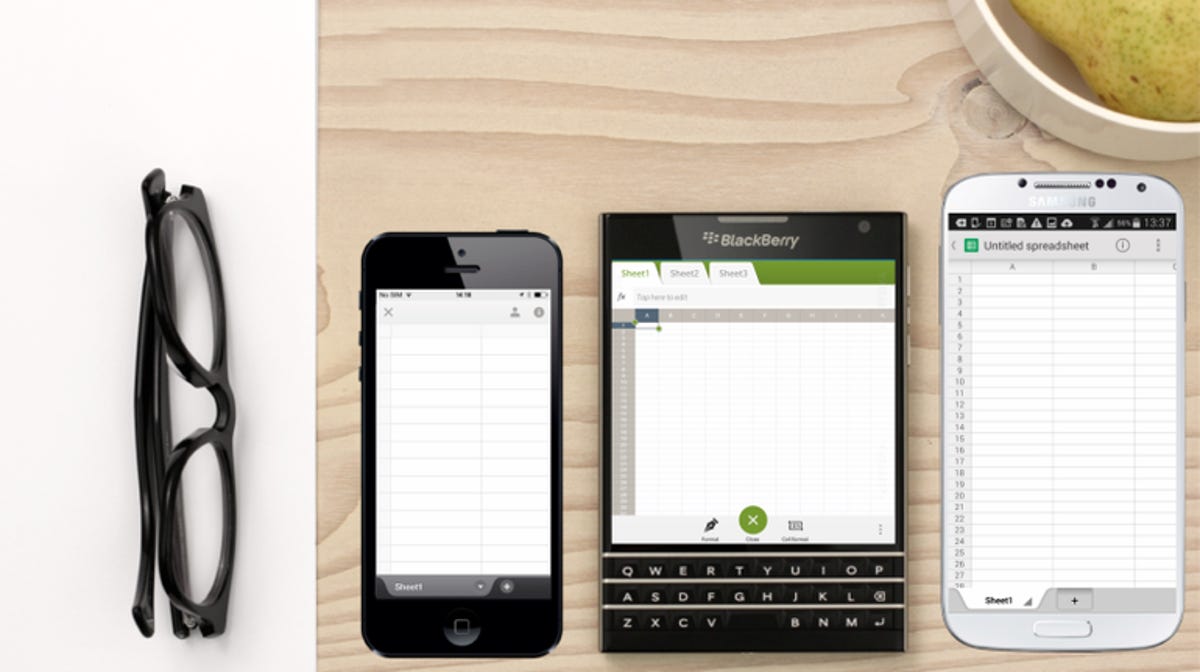
BlackBerry
Since the release of the BlackBerry 10 operating system, the Canadian handset maker’s devices have come in two flavors: phones with large rectangular displays that embody the modern iPhone and Android slab motif and phones with small square displays and physical keyboards that hearken back to classic BlackBerry designs.
Now, the company seeks to take the next step in its comeback with one of the boldest designs in its history: the BlackBerry Passport. The phone, which goes on sale in September, features a 4.5-inch square display above a straight three-row keyboard, a departure from the curved keyboards historically seen on BlackBerry devices. The Passport’s dimensions, and lack of top and bottom chrome accents, make it appear as if it’s only the top part of a much longer handset.
Earlier this month, BlackBerry responded to skepticism that the design was ungainly with a detailed blog post defending its design decision. The post includes the company’s typical tech reasoning about how many characters you can fit on its screen (60 vs. a more typical 40 in case you care) and why the Passport is better suited to text because of its screen.
Related stories
- With Passport phone, BlackBerry says it’s hip to be square
- BlackBerry Passport phone on tap for September launch
- ackBerry on list of brands most likely to disappear in 2015
- Amazon Appstore heads to BlackBerry 10 phones
To be sure, beyond the general skepticism surrounding the company today, width per se isn’t a desirable trait in a smartphone. LG has taken pains to emphasize how it has been able to minimize the width of its latest flagship smartphone, the LG G3, even as it has expanded the display.
But, if you can get past its unconventional looks, the Passport has a few things going for it.
First, BlackBerry’s wide-body phone won’t be entering as sparse an app landscape as its predecessors. Last month, BlackBerry announced users will have access to the Amazon Appstore when the BlackBerry 10.3 operating system launches this fall. The move could do much to boost the fortunes of BlackBerry, greatly smoothing the path to getting Android apps onto its phones.
Indeed, with the launch of the Fire Phone , Amazon has more incentive than ever to expand its selection of Android apps. While Amazon will push for these apps to support features specific to the Fire Phone, the stronger focus on mobile should benefit BlackBerry despite Amazon’s hardware competition.
While attention has mainly been focused on how the Passport will display content, BlackBerry may have an even stronger story to tell about how content is entered. What the Passport’s keyboard lacks in rows, it makes up for in cleverness.
The keyboard features a predictive virtual fourth row that appears onscreen and shifts depending on what you’re typing. A range of gestures across the physical keys can also help complete words, delete mistakes, and speed up typing, letting the keyboard act somewhat like the miniature trackpad that was a boon for precise movements on earlier BlackBerrys (and some Android phones such as the original T-Mobile G1).
The Passport, however, won’t do much to reverse the precipitous decline of physical keyboards. For the true BlackBerry traditionalists, the company also plans to offer the BlackBerry Classic, another QWERTY device that brings back the button row on phones like the Bold and Curve that ran BlackBerry 7.
The Passport stands to impress the critical avant-garde of BlackBerry users that the company hopes to evangelize to its new direction. The Passport embraces both the big screen and big keyboard. While BlackBerry has already moved into the larger phone market market with the Z30, the Passport seems like a phablet the handset maker can truly call its own.



